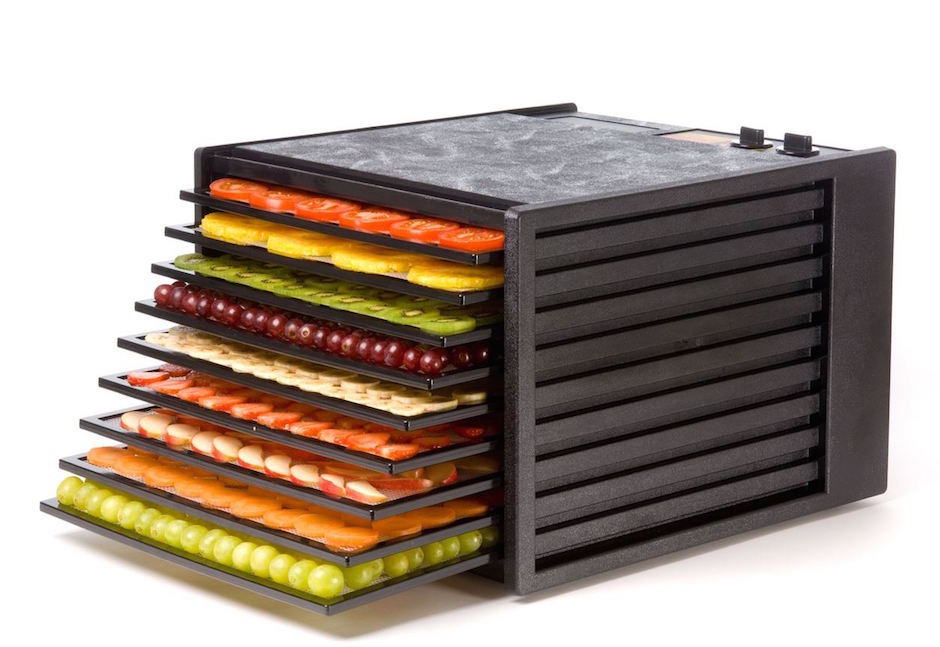The perks of a dehydrator
Make your own nutrient-enriched kale chips, dried fruits (think fruit-roll up!), breads (gluten days be gone!), crackers and desserts with one of my favorite kitchen tools, a food dehydrator! Dehydrators deliver foods, using low temperature heating, with essentially the same nutrition (enzymes, vitamins, minerals) as their fresh counterparts. These quiet and easy to clean tools remove approximately 75% of the moisture from foods, resulting in foods that are infused with a beautiful array of concentrated flavors.
These differ from classic heating tools like the oven, which use heat at high temperatures to remove moisture, resulting in a product that’s modified (baked, cooked, roasted). These modified foods may be tasty, but many of their nutrients will no longer be functional and usable by the body.
Dehydrated foods should be stored in airtight containers away from direct sunlight, like in the pantry or cupboard. You can also store dehydrated foods that have retained some moisture in the fridge for long term freshness.
Use a timer when dehydrating, to ensure you don’t over-dehydrate foods. Oven and wall timers work well, or you can purchase a dehydrator with a built-in timer functionality.
Use teflex sheets when working with ‘wetter’ foods, like sauce-laden kale, or when making breads and crackers. These sheets are reusable and easy to clean. And don’t worry, if you forget to purchase teflex sheets right away, you can substitute with parchment paper (soy-based, preferably!) and still enjoy preparing our favorite creamy kale chips.
Why I love my dehydrator
Think of all the reasons why we loved packaged foods growing up: the crunch, burst of flavor, ease of transport in school lunchboxes. The dehydrator can satisfy these and more, but in such a way as to protect the nutrient density. Another reason why I love my dehydrator – foods never go to waste. Everything gets repurposed and recycled when I’m in the kitchen. When making nut milk with soaked almonds, I’ll pour the liquid through a sieve and collect the almond skin. I’ll dry the almond skin in my dehydrator and save this new ‘flour’ for use in unbaking, or even when making vegan pancakes or waffles. Store it in the fridge for ultimate freshness. I’ll also take all that juice pulp from my weeks of cleansing, dry it in the dehydrator, and use it to make breads and crackers! Finally, I’ll soak nuts and seeds, like almonds and pumpkin seeds, to sprout and activate them. I’ll use some to make milks and raw dips, and then I’ll spice the rest and throw them into the dehydrator to dry with a burst of flavor. This preps them for on-the-go snacking. There are no scraps in this raw kitchen ![]() .
.
Buying Guide
When buying a dehydrator, the key features you will need to consider are:
- Number of trays – I’ve found that 5 trays are plenty for me; but if you have a larger family or high demands for dehydration, you should get more trays
- Timer – While not essential, this is a great feature to enable worry free timed, unattended dehydration
- Size – Some are compact, while others resemble a mini-bar fridge, so purchase yours based on your allotted storage space

